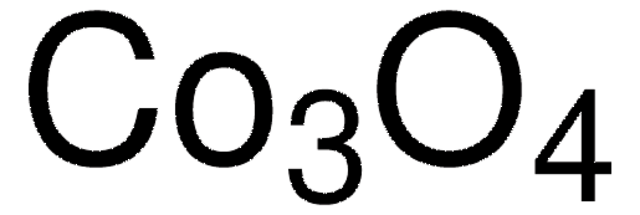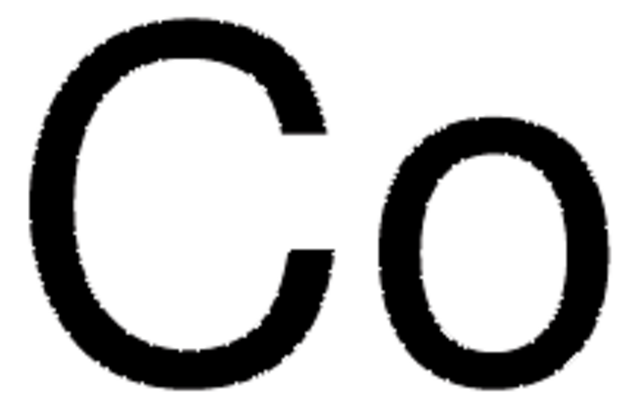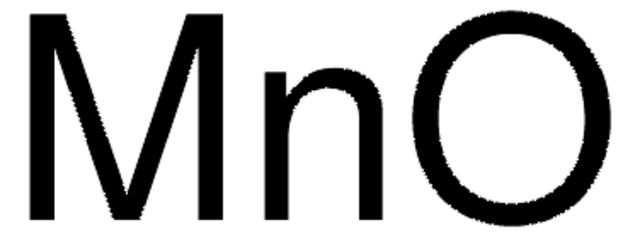637025
Cobalt(II,III) oxide
nanopowder, <50 nm particle size (SEM), 99.5% trace metals basis
Synonyme(s) :
Cobalt tetraoxide, Cobaltic-cobaltous oxide, Tricobalt tetraoxide
About This Item
Produits recommandés
Niveau de qualité
Pureté
99.5% trace metals basis
Forme
nanopowder
Superficie
40-70 m2/g , typical range
Taille des particules
<50 nm (SEM)
Pf
895 °C (dec.) (lit.)
Densité
6.11 g/mL at 25 °C (lit.)
Masse volumique apparente
0.57 g/mL
Application(s)
battery manufacturing
Chaîne SMILES
O=[Co].O=[Co]O[Co]=O
InChI
1S/3Co.4O
Clé InChI
LBFUKZWYPLNNJC-UHFFFAOYSA-N
Vous recherchez des produits similaires ? Visite Guide de comparaison des produits
Description générale
Application
- To modify the glassycarbon electrode for the detection of As(III) at nanomolar concentrationrange.
- To prepare a robust photocatalyst along withcarbon nanospheres for dye degradation and hydrogen evolution reaction.
- As an electrodematerial in the preparation of supercapacitors.
Mention d'avertissement
Danger
Mentions de danger
Conseils de prudence
Classification des risques
Aquatic Chronic 3 - Carc. 1A Inhalation - Resp. Sens. 1
Code de la classe de stockage
6.1C - Combustible acute toxic Cat.3 / toxic compounds or compounds which causing chronic effects
Classe de danger pour l'eau (WGK)
WGK 1
Point d'éclair (°F)
Not applicable
Point d'éclair (°C)
Not applicable
Faites votre choix parmi les versions les plus récentes :
Déjà en possession de ce produit ?
Retrouvez la documentation relative aux produits que vous avez récemment achetés dans la Bibliothèque de documents.
Les clients ont également consulté
Articles
Currently, magnetic nanoparticles (MNPs) are attracting a lot of attention because of the possibility of many novel applications, especially in biomedical research.
Graphene is a unique two-dimensional (2D) structure of monolayer carbon atoms packed into a dense honeycomb crystal that has attracted great interest due to its diverse and fascinating properties.
The application of magnetism and magnetic materials pervades our modern civilization in the form of electrical power, communications and information storage.
Magnetic materials permeate numerous daily activities in our lives. They are essential components of a diversity of products including hard drives that reliably store information on our computers, decorative magnets that keep the shopping list attached to the refrigerator door, electric bicycles that speed our commute to work, as well as wind turbines for conversion of wind energy to electrical power.
Notre équipe de scientifiques dispose d'une expérience dans tous les secteurs de la recherche, notamment en sciences de la vie, science des matériaux, synthèse chimique, chromatographie, analyse et dans de nombreux autres domaines..
Contacter notre Service technique











